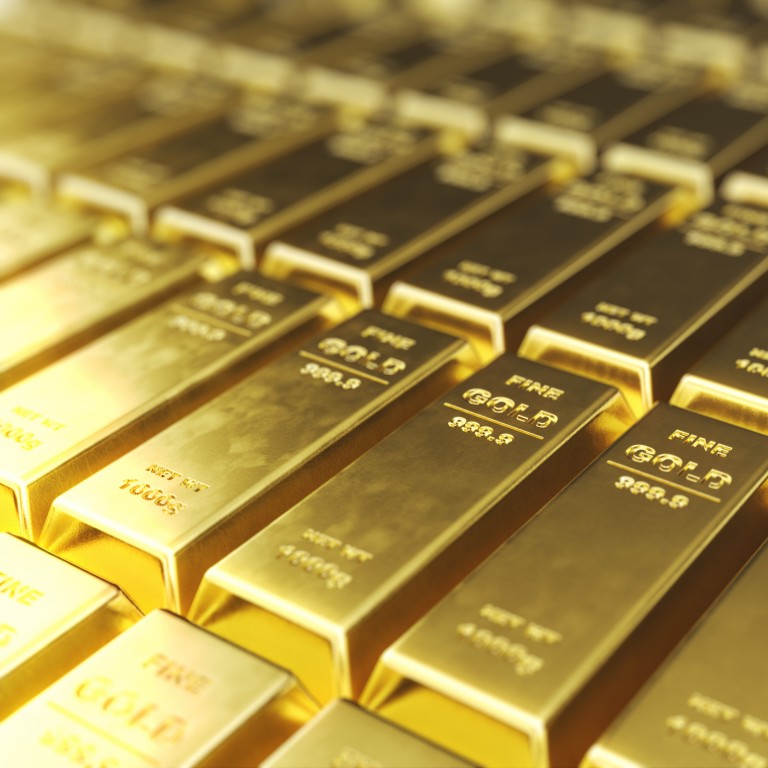
Investors get gold fever. But look out if Trump-Xi meeting this week is seen as a big success
- Gold has soared since mid-May, amid global uncertainties
- Xi-Trump meeting this week at G20 could prove a decisive moment. If it is deemed at big success, gold’s appeal could dim
Is it time for investors to start believing the gold bulls?
The yellow metal has been soaring.
It rallied to a five-year high after the US Federal Reserve signalled on Thursday that it is open to cutting the key interest rate, boosting gold’s appeal to investors hunting for price appreciation. It recently traded at US$1,388.29.
That’s up 8.6 per cent since May 17, when it began its most recent rally, and up 17.3 per cent since September 27, when it was at its most recent low of US$1,182.83.
It means gold is up 8.3 per cent year-to-date, close to Hong Kong’s Hang Seng Index performance of 10.2 per cent this year, based on gold’s price Friday evening.
And, uncertainties – from the US-China tug of war over trade and tech to a flare-up in Iran as well as concerns about the health of the global economy – add to gold’s allure as a safe haven, analysts point out. Meanwhile, Russia and China, among other countries, have boosted their gold holdings, enhancing its price.
On the back of risks and central banks’ loosening monetary policy, Citi raised its target price for gold to US$1,450 over the next three months, assuming a 50 basis point interest rate cut by the US Federal Reserve and further signalling of its dovish stance.
In a bull scenario, gold could trade at US$1,500 by the end of the year, according to Aakash Doshi, director of commodities at Citi based in New York, if the US Fed dramatically cut rates, and as global central banks move to cut interest rates close to zero or – in the case of European Central Bank – deeper into negative territory.
Billionaire investor Paul Tudor Jones, founder of the macro trading hedge fund firm Tudor Investment, says gold could even hit US$1,700 by the end of the year.
“You have a lot of negative-yielding bonds in the market, which is unappealing. At the same time you have a risky market whereby the US could possibly head into a recession, especially if we have a case of the US China trade war escalating,” said Stephen Innes, managing partner of Vanguard Markets.
But amid the sudden glitter around gold, there is also scepticism about its prospects.
After all, the US Fed would cut rates – if it does – to bolster the world’s largest economy, which could boost US equities now in a 10-year bull run. And presidents Donald Trump of the US and Xi Jinping of China have agreed to meet next week to revive trade talks, which, if it eventually leads to a deal, would be expected to reduce gold’s appeal as a safe haven.
“As a long-term defensive play, I would advise clients to add physical gold to their portfolio. But at current level, I think gold is expensive,” Kevin Leung, executive director at wealth management division of Haitong International Securities, said. He added he expects Hong Kong and Chinese stocks to continue to perform well through the year.
A “panic buying spree” of gold took place after Iran shot down a US surveillance drone, Innes said, and that was one week after the US accused Iran of attacking two tankers in the Gulf of Oman.
Innes said to expect gold prices to move over the high-stakes Xi-Trump meeting this week in Osaka, at the G20 summit of leaders of the world’s top economies.
“If there is some form of de-escalation of the US-China trade tension, that would present a boost to risky assets, and would take the lustre off gold. Then I would see gold dropping to US$1,350-US$1,360, which I see as the ultimate downside support,” said Innes.
Jasper Lo Cho-yan, chief of investment strategies at Eddid Securities and Futures, said given that the US stock market has recently reached historic highs, a trade deal would erode the attraction of gold as a safe haven asset as appetite return to risk assets.
“For gold to continue its uptrend, you need sustained risk aversion sentiments, which I don’t see it now,” Lo said.
On Thursday, the S&P 500 in the US was up 17.8 per cent year-to-date, after reaching 2,954.18, a high since April 30. The US equity benchmark already finished March with the best quarter in nearly a decade.
But Bruce Yam, forex strategist at Everbright Sun Hung Kai Forex, said if the US and China fail to reach a trade deal, he could see gold heading into a prolonged upwards cycle that could go on for the next five years, rising potentially to US$1,900.
“Let’s say if the G20 summit did not yield a detente, and that the US would slap a 25 per cent tariff on almost all remaining Chinese imports, that would present inflationary pressure to the US, which is favourable to gold,” Yam said.
China exports in May went up as Chinese companies rushed shipments to the US to avoid potential new tariffs on Chinese imports, estimated by the US at US$300 billion, he noted.
“Once the stockpiling finishes and inventory levels fall in the US, the impact of tariff would present inflationary pressure to US businesses and consumer product prices,” said Yam.
Gold is seen by many experts as a good hedge against inflation, as its price rises at a time when inflation erodes the value of a nation’s currency.

